Ko Samet: A ride down the spine
Accessible by motorbike or an exhausting bike ride, the far southern beaches of Ko Samet usher in a soothing vibe to contrast the bustling north. (Island Daze #24)
When asked about Thailand’s most popular islands, I always point out that some parts of them actually look and feel more like the quieter and less-developed islands. From the rugged southeast coast of Ko Chang to Ko Lipe’s far western coves, even the big-name islands have plenty of tranquil spots if you’re willing to go look for them. In the eastern Gulf of Thailand, Ko Samet is no exception.
I admit, the first images of Ko Samet that enter my mind are the sprawling concrete resorts packed onto busy northern beaches like Hat Sai Kaew and Ao Phai. Before the pandemic, the 13-square-km island drew foreign travelers as well as moneyed Thais on weekends, and the beachside parties often left young Bangkokians battling hangovers during the Sunday-morning ferry ride back to the mainland. Overall, I would not call this tourism stalwart of Rayong province a laid-back island.
Some of the travelers who spend a couple of nights on a busy beach while barely exploring elsewhere write Ko Samet off as too touristy and overdone. Indeed, the heavy development in the north can be hard for some to accept given how Ko Samet is ostensibly part of a national park, which requires foreign adults to buy a 200-baht ticket even if they stay in a privately owned resort and never use any of the meager park facilities, other than the ticket booth.
But if you want to make the most of Ko Samet, buy the national park tickets and head south down the seven-km spine of this slender, stingray-shaped island. You could stay at one of the more isolated resorts for an extended stretch of serenity, or do as I’ve done more than once and roll down the lengthy southern tail on two wheels. If you make it to the remote spots, do watch out for the red ants.
Escaping the crowds
I toss my pack into a 700-baht bungalow in the heart of Ko Samet’s main village, having found it to be an affordable base for exploration by day and a lively spot with a wide selection of food and drink after dark. After having problems with cheap bicycles in the past, I pay a little extra to rent a decent mountain bike near the pier. “Not a motorbike?” asks the Burmese man running the shop.
For me, a bicycle is the ideal vehicle for beach hopping on mid-size islands like Ko Mak, Ko Mook, Ko Sukorn and, indeed, Ko Samet. Most of the grades aren’t too steep, and anyway, I can use the exercise when reaching hillier terrain.
I hold up my ticket at the national park gate and barely catch a glimpse of Hat Sai Kaew as I pass the ugly concrete hotels built in decades past. I roll down to Ao Hin Khok, where most of the old fan-cooled huts have been replaced by concrete rooms, before wheeling by the trendy resorts of Ao Phai. My wheels splash into a mud puddle where banyan-tree roots have diced the pavement up into puzzle pieces.
The lane turns inland and I soon hang a left to avoid heading straight across the island to the swanky beach resorts at Ao Phrao. Pedaling south through rolling terrain blanketed in some of the jungle that Thai authorities managed to protect as part of Khao Laem Ya - Mu Ko Samet National Park, I descend beyond the turnoffs for Ao Tubtim, Ao Nuan, Ao Cho and Ao Wong Duean. Each of these beaches are worth visiting, but on this day I seek the more distant of Ko Samet’s sands.
Uncle Black and the fire ants
Some 40 minutes after setting out I reach Ao Loong Dam, a beach of khaki sand broken up by metamorphic boulders as large as economy cars. Named after a certain “Uncle Black” who settled here last century, I’ve been told, Ao Loong Dam is one of the only spots left on Ko Samet where you’ll find a backpacker-oriented vibe that hasn’t changed too much since the 1990s. Hammocks abound.
As I skirt the boulders on the walk south to Ao Loong Dam, a little tour boat arrives with some monks who appear to be having a swell time.
A few resorts — if you can call them that — provide spartan fan-cooled bungalows with seaside common areas where I’ve often waited a while before locating a staffer to do inspections for the Travelfish guide to Ko Samet. At the southern end of the beach, Apache is punctuated by art made of driftwood with bungalows built around umbrella tree trunks, a bunch of chill-out salas and a ramshackle pier to leap off. As I wrote back in 2016 , this is one place where you can “let your hair down.”
Back on the bike after a chat with Apache’s soft-spoken owner, I spot the vague markings of a foot trail cutting into the greenery. A moment later I’m hiking along sloped stone mixed with tall grasses and wildflowers on undeveloped terrain. The choppier west-coast waves hit the rocks with a slap as the wind cools me. I end up finding several more paths leading to similar spots, each so secluded that I encounter no more than one couple awaiting sunset at one of them.
I stumble just before returning to the sealed road, dropping my water bottle into the brush. To fetch it, I need to place much of my body against a leafy branch which acts as a bridge for a brigade of red fire ants to come sting my neck, back and arms in too many places to count. It hurts. They crawl under my clothes, forcing me to perform the “ants-in-the-pants dance” up on the road. A few bare-chested traveler dudes slow down their motorbikes, shooting me humored looks as they pass.
All the way down the spine
A few ants still roam inside my shorts by the time I reach Ao Wai, the remote “Rattan Bay” with a 400-meter crescent of fluffy white sand. Aesthetically, it might just be the finest beach on Ko Samet. Rocky headlands extend from either end, keeping the water calm and clear enough to make out each wrinkle on my toes as I wade.
The only place to stay at Ao Wai is the midrange Samet Ville, whose bulky family-oriented rooms are spread around a vast property with abundant tree cover. In the past I’ve found it a bit run down and impersonal, but the facilities are well equipped for weddings and I’ve taken a shine to some of the cottages perched upon the southern headland. From there you get an outlook back over the bay.
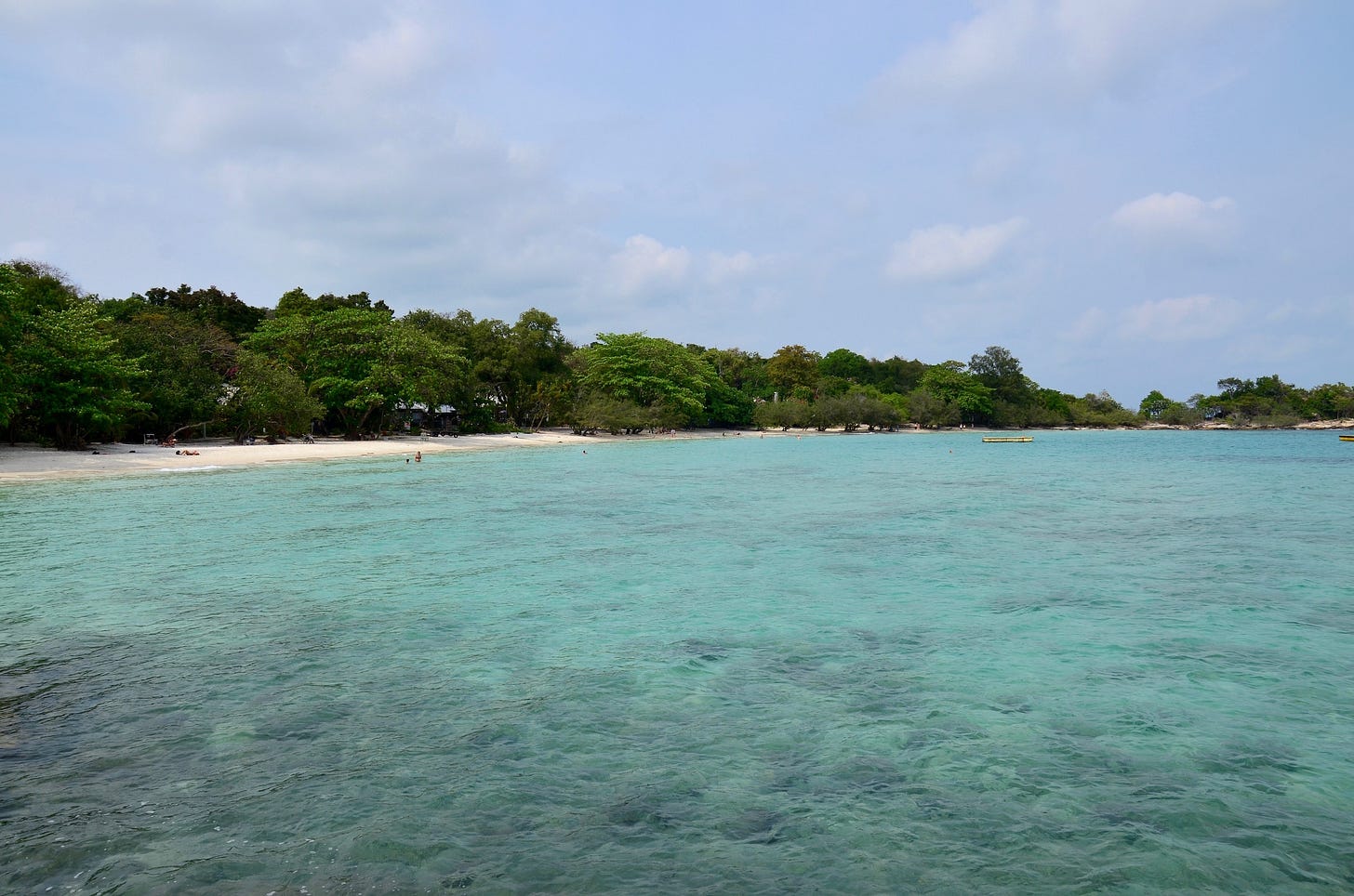
The road steepens as I approach the end of Ko Samet’s tail in an area where the island narrows to only 200 meters across in some places. One of the thinnest stretches is rimmed by Ao Kiew (or Kiu), a name used for a pair of short beaches set on either coast. A five-star resort hogs both of them. The security guards are not welcoming to random sweaty travelers who may or may not have ants in their pants, but no one can stop you from kayaking to these beaches from elsewhere.
The final km is excruciatingly steep. I admit to walking the bike up hills, but the last stretch feels like speeding down a roller coaster before landing at the dirt car park for Nimmanoradee Resort, the southernmost place to stay on Ko Samet. With a restaurant in a gazebo and 2,000-baht hexagonal cottages painted light pastels, this is one of very few resorts in Thailand that I genuinely find charming.
The small resort occupies a steep hill descending to a coast with splotches of sand and rocks that extend to form a 250-meter peninsula known as Laem Kood (or Kut). I fold my red-dotted legs down into a folding chair in the shade of tian talay trees, a species often trimmed to make bonsais. A soft breeze sways the purple sage flowers. A Thai man quietly fishes from the rocks as a foreign couple drags their kayak ashore, making a shhhhh sound as it slides over the sand.
A 200-meter hike further south takes me to Ko Samet’s endpoint at rock-faced Ao Pakarang. When viewed on a map, this hidden cove looks like a bite that a kid took out of the tip of a popsicle. The namesake coral attracts snorkelers when they’re not on boat trips to other islands, but I’m here for one more breath of the clean salty air before the long ride back north. Beyond the nearby islet of Ko Chan, the wide open Gulf of Thailand stretches far beyond the horizon. 🌴
Thanks for reading Thai Island Times, an independent, reader-supported newsletter sharing the beauty, challenges and distinctive identities of Thai islands and coastal areas.




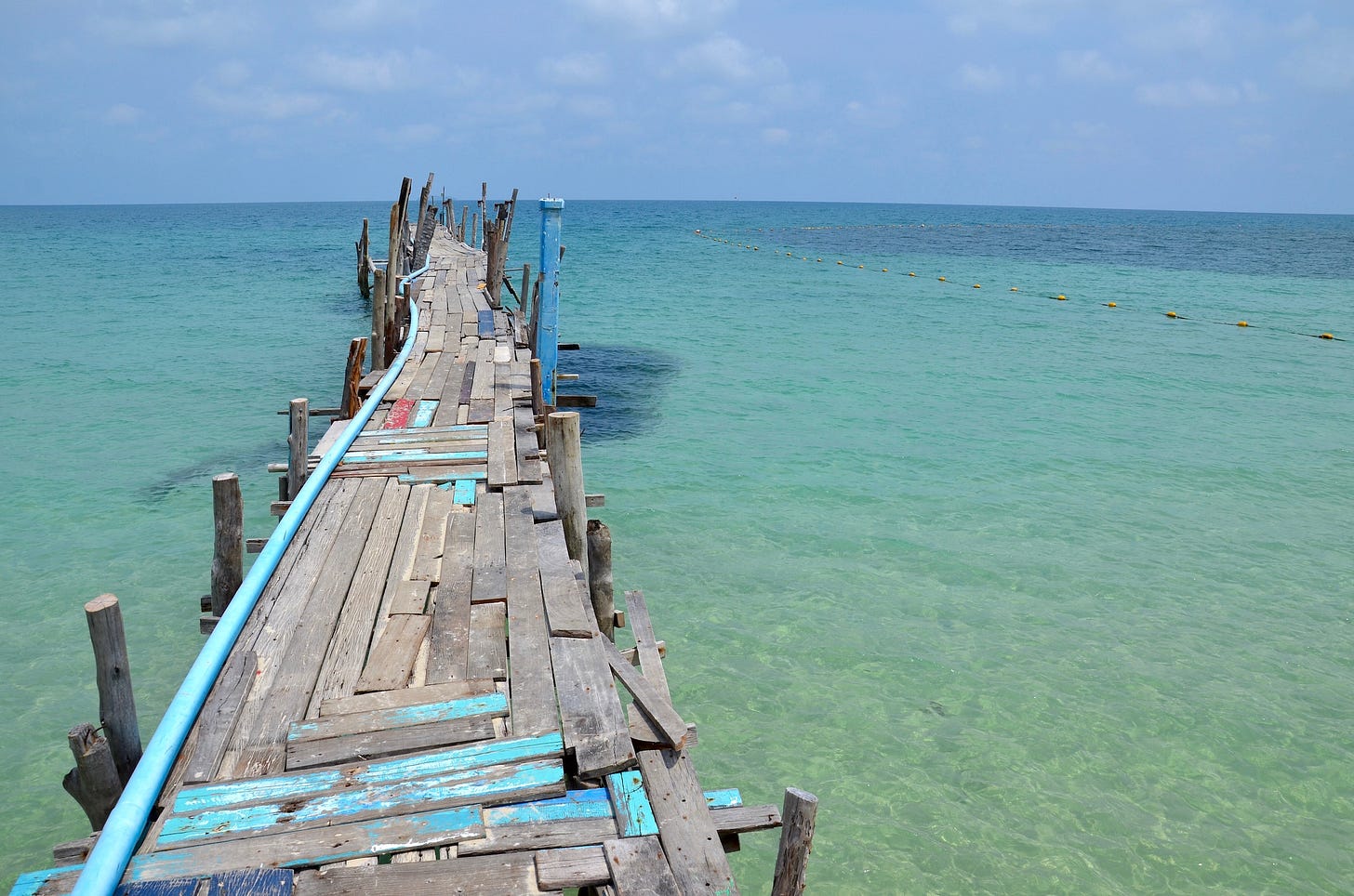
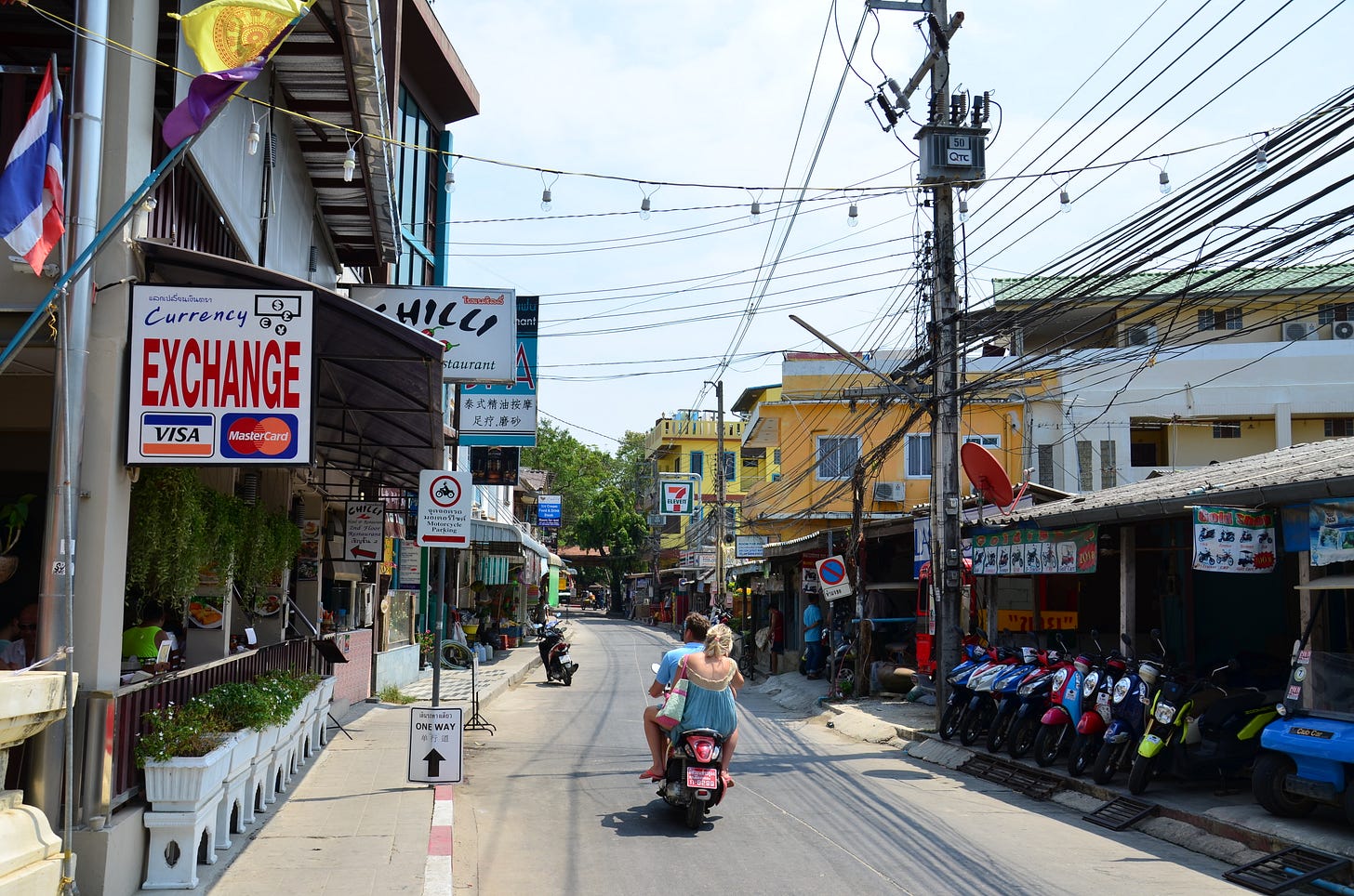
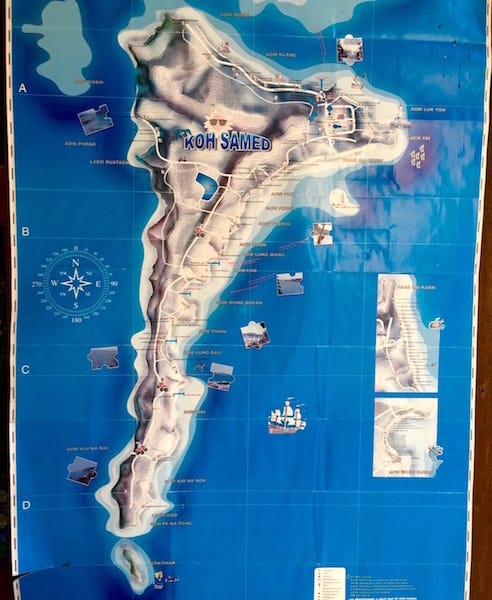
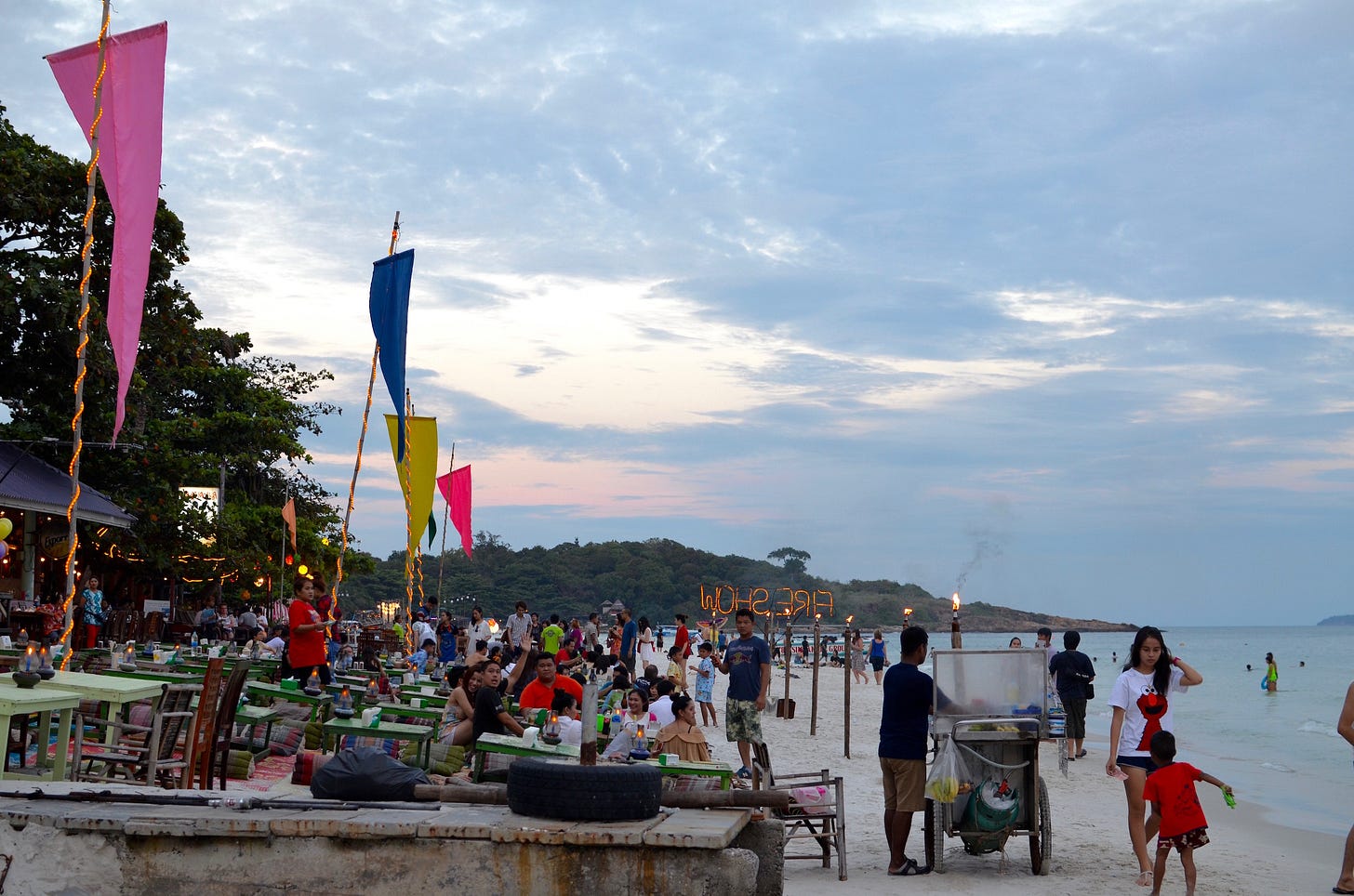
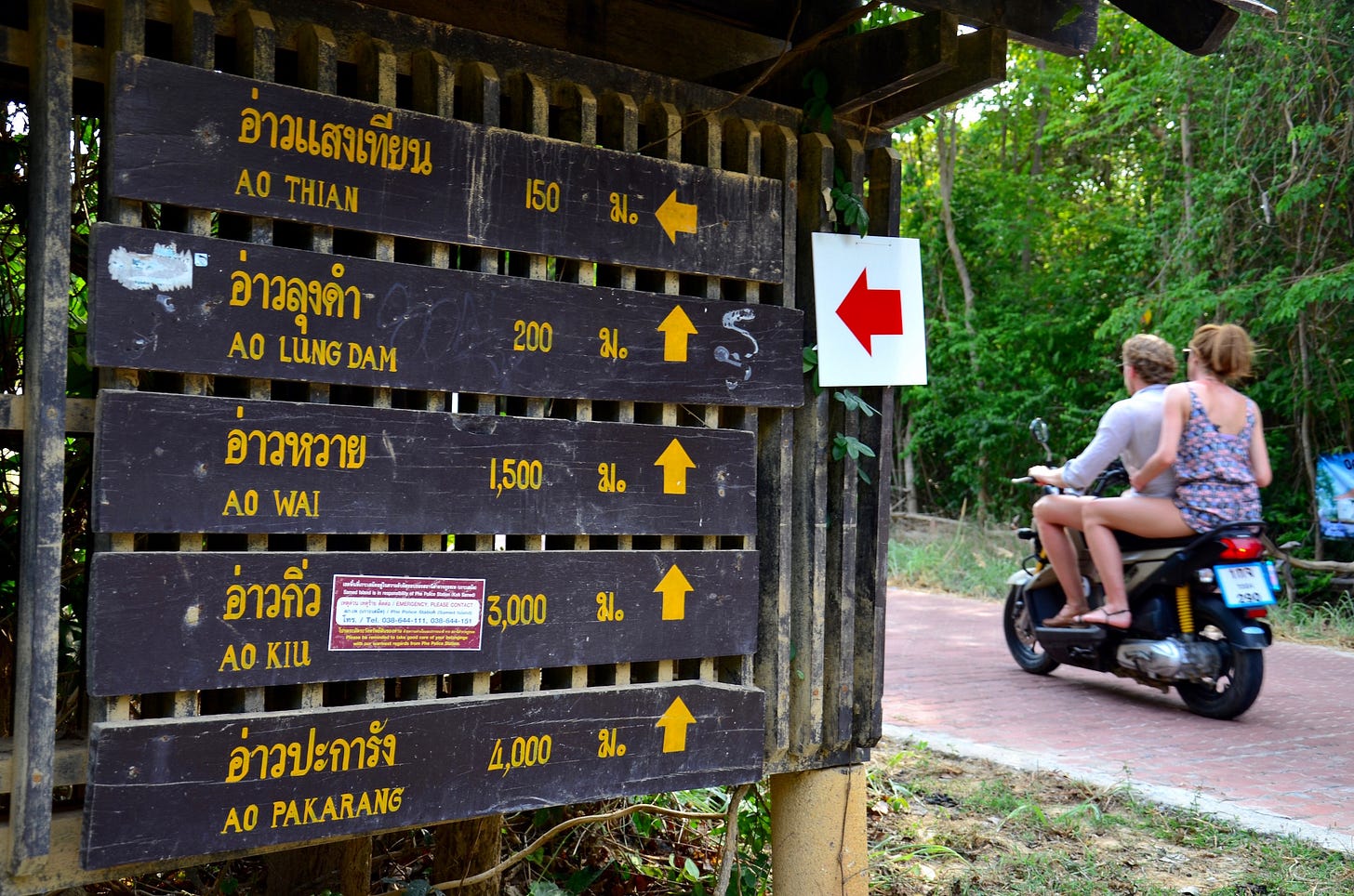
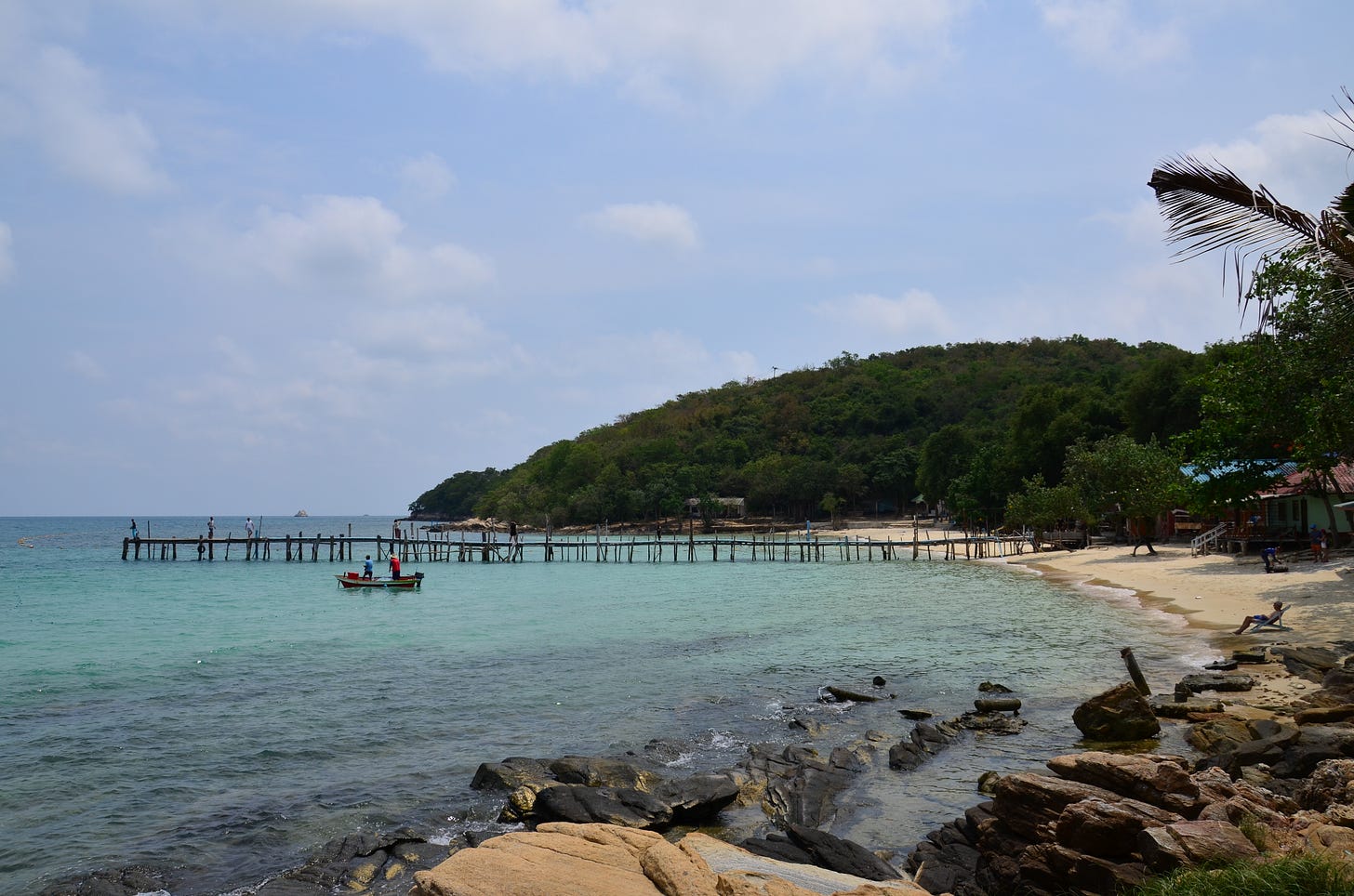
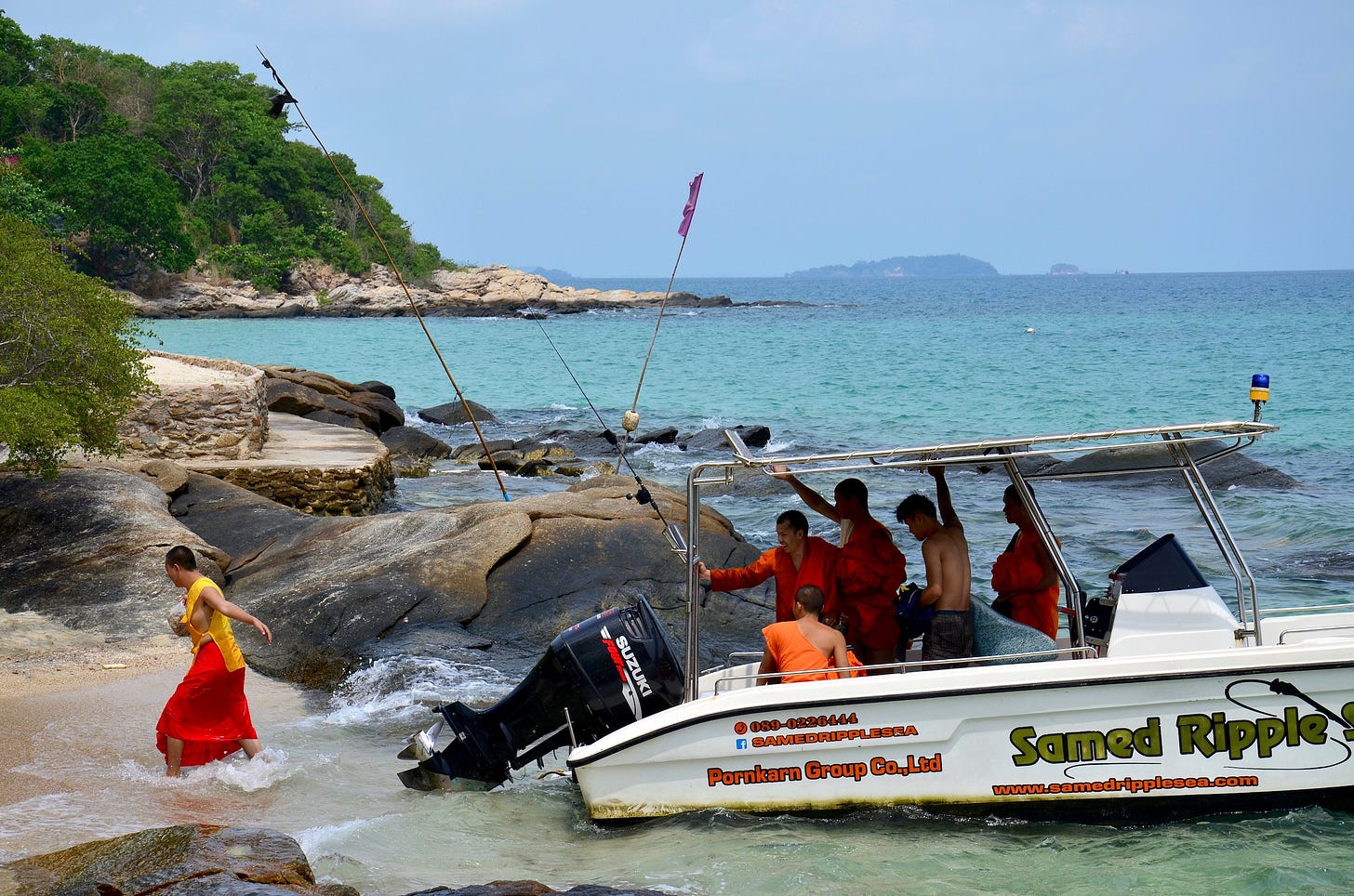
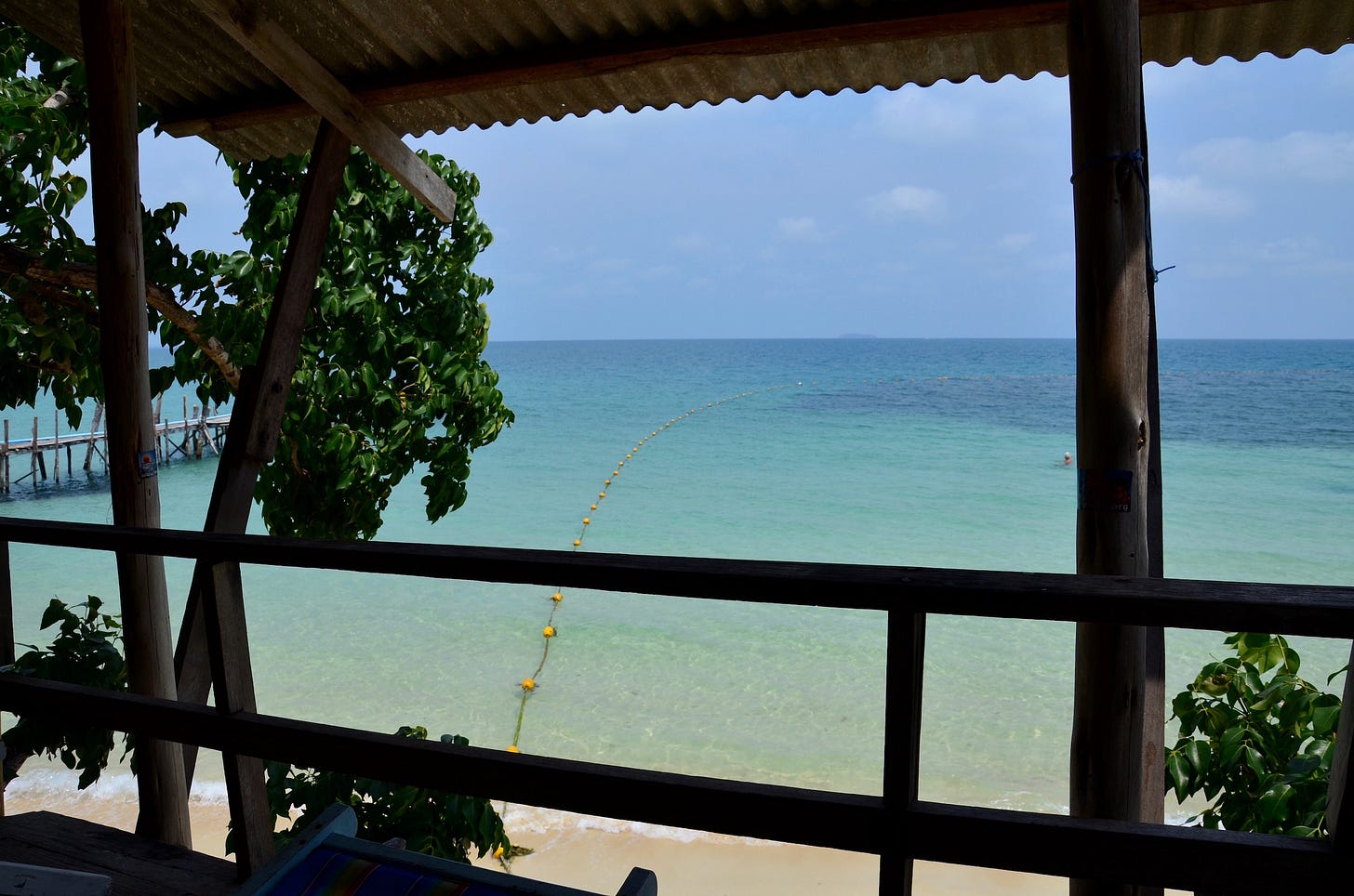
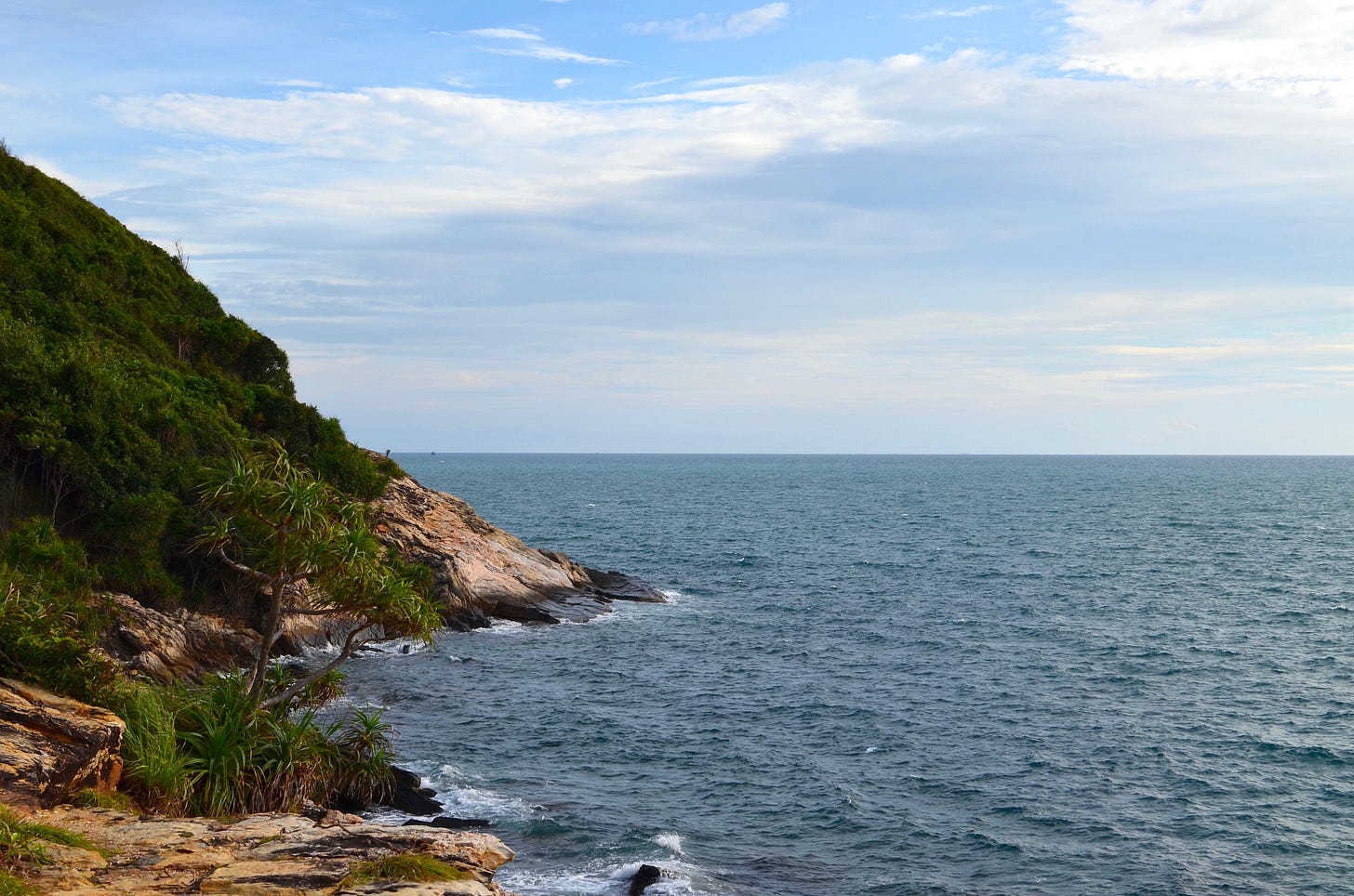
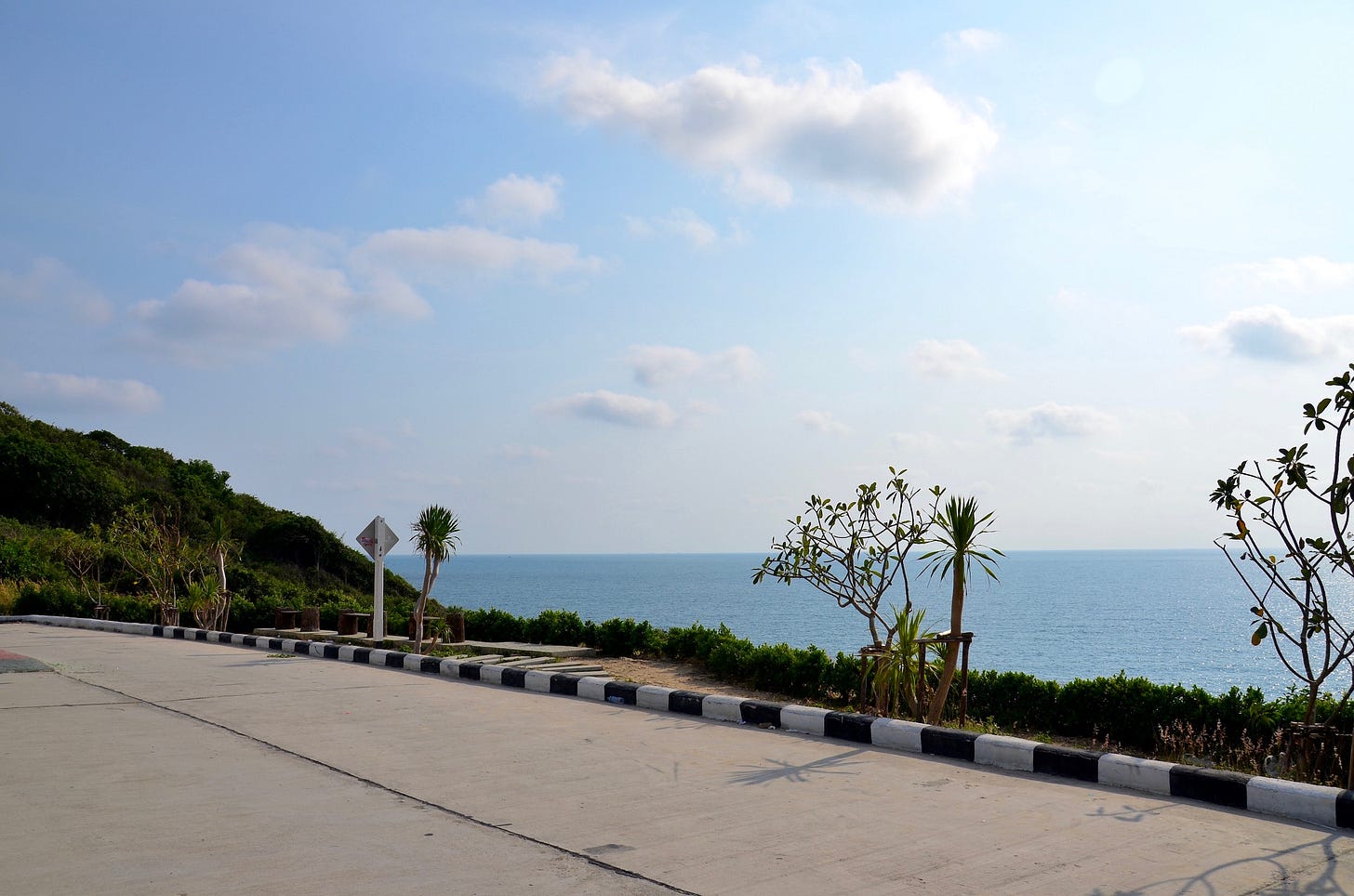
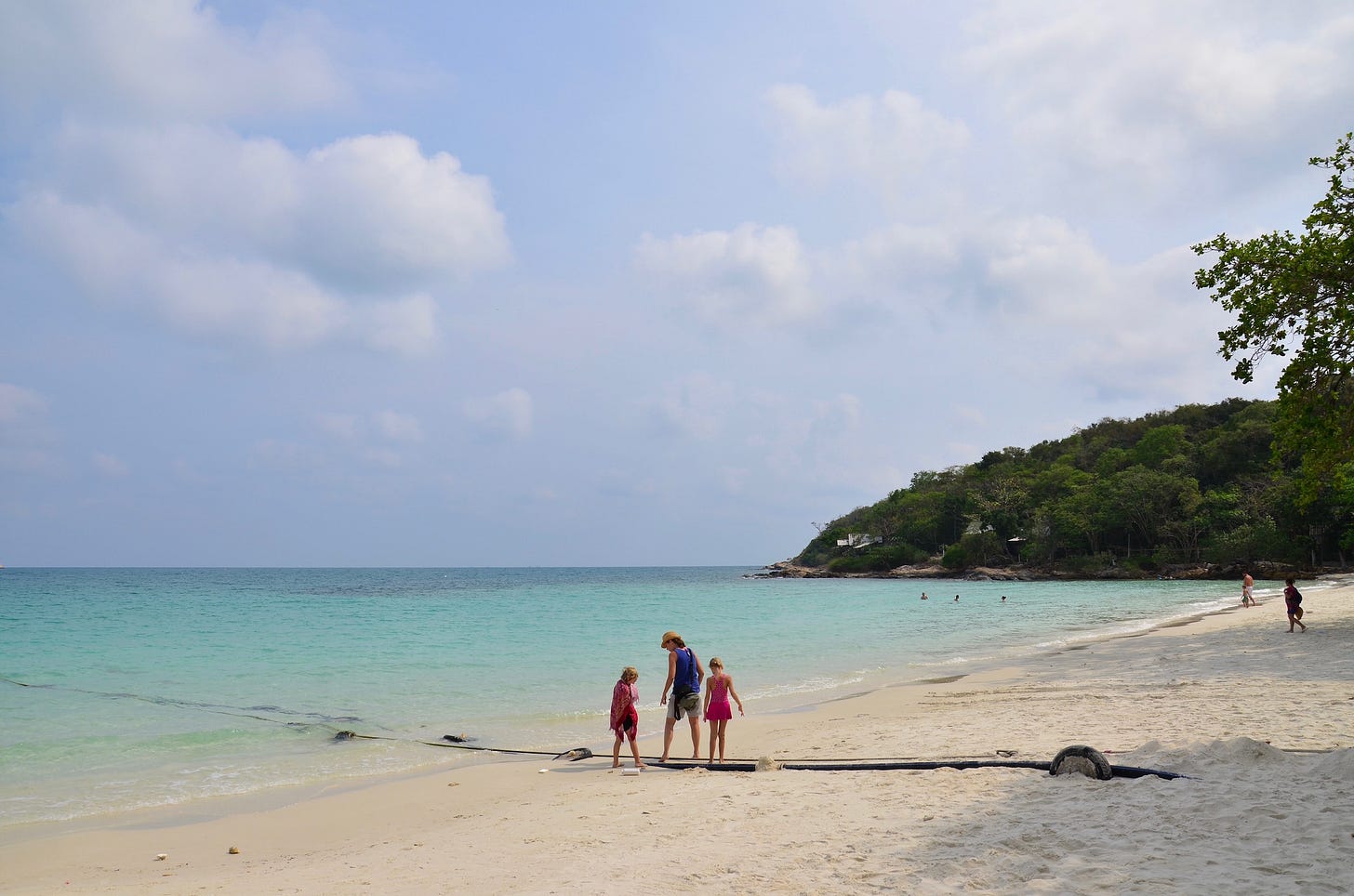
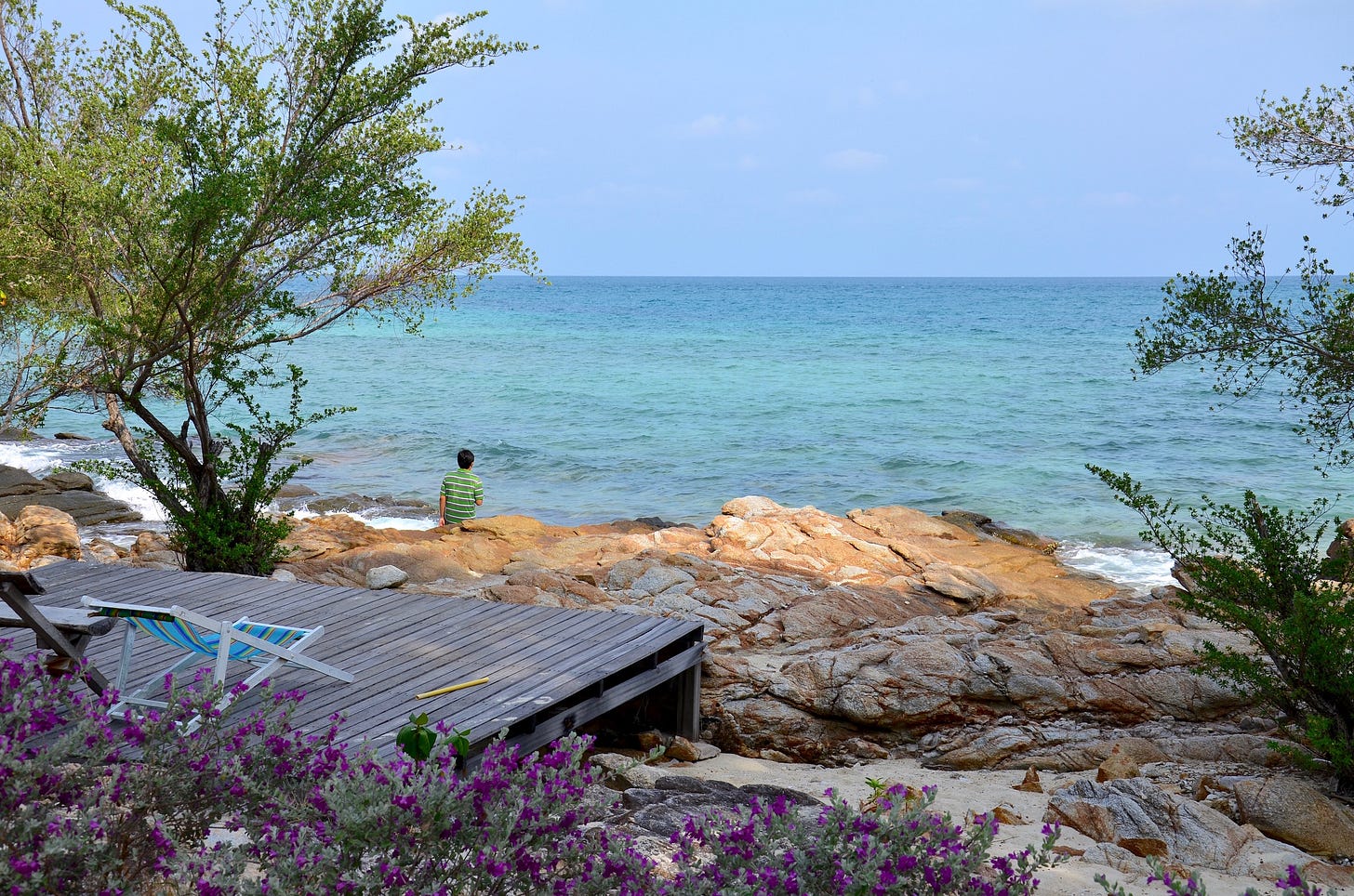
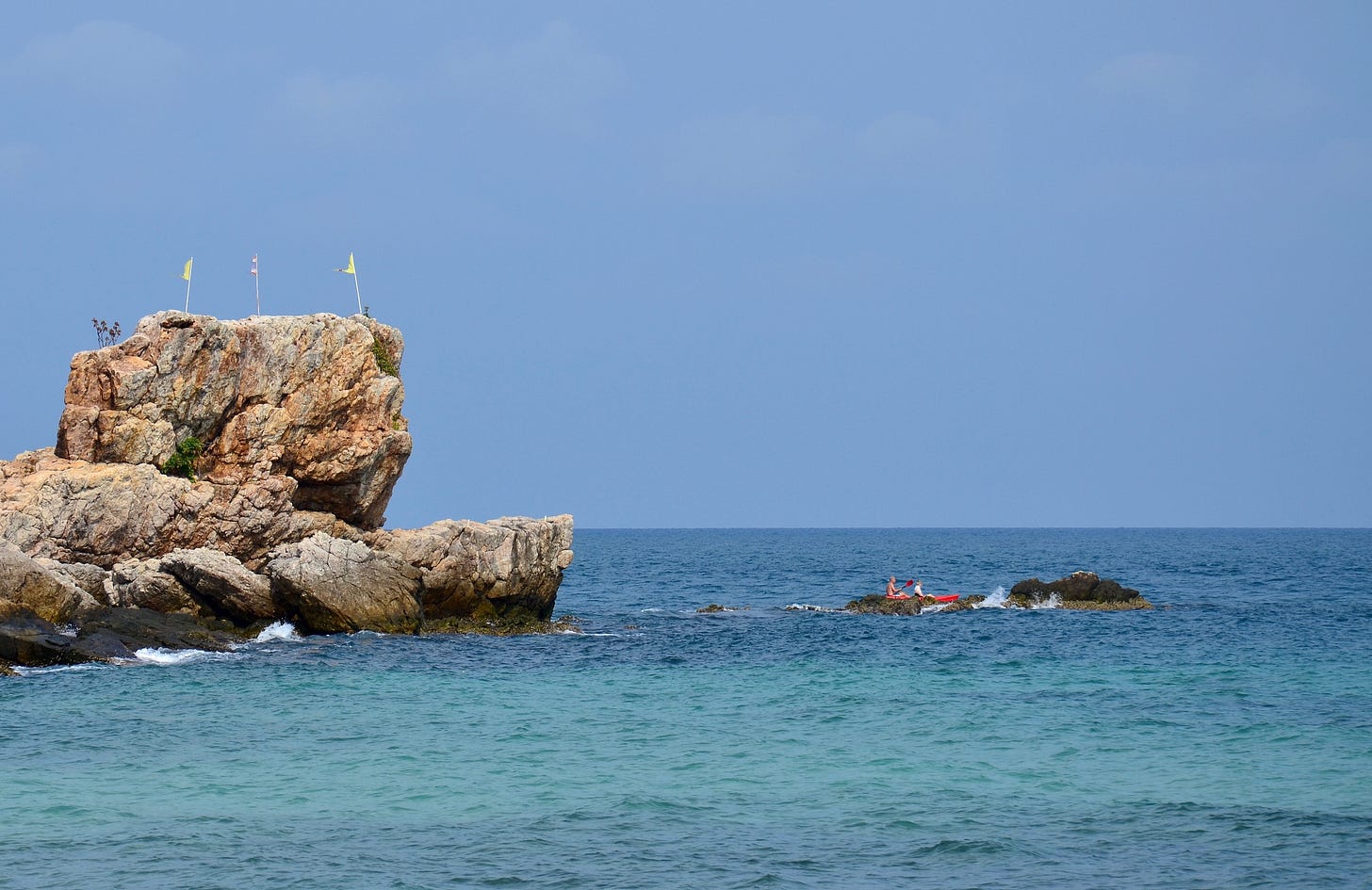
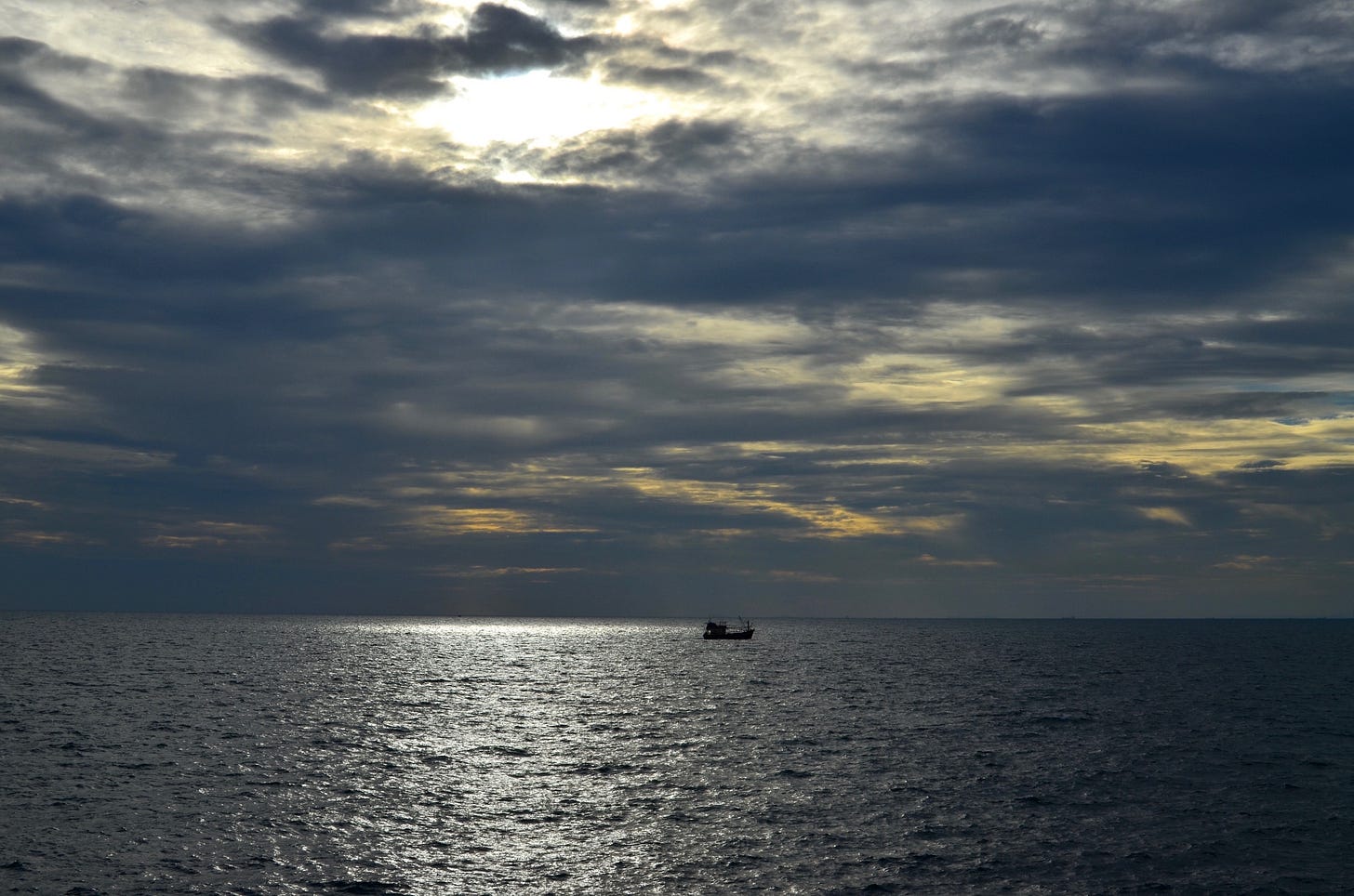
There are still some parts of Samet I love. But I was chased away by security and then the manager when I tried to land my kayak on Ao Kiew a few years ago.
From the Monks who just want to have fun to the ants in the pants to the incredible beaches, this was a great read!